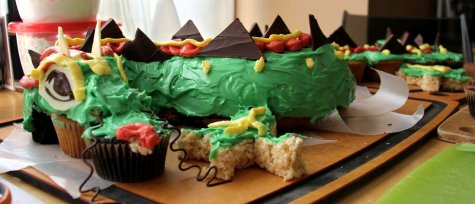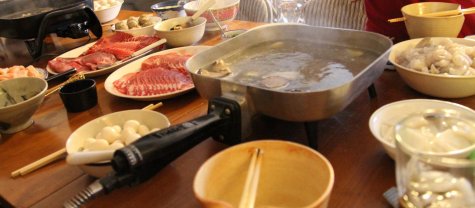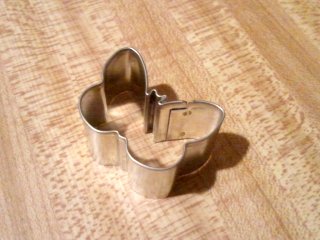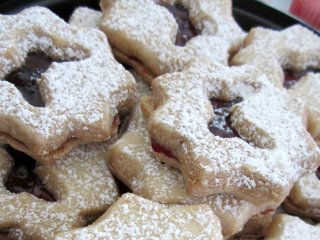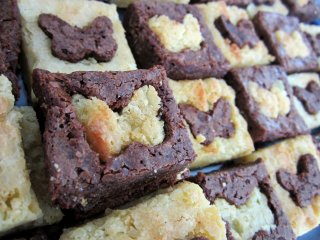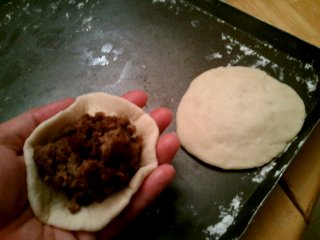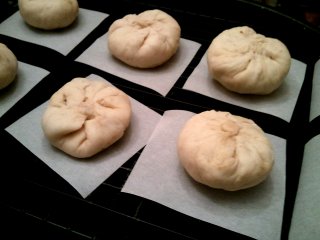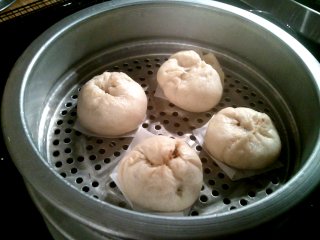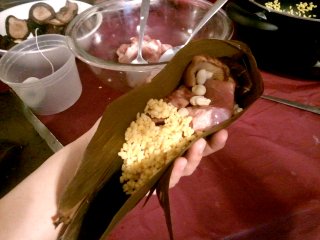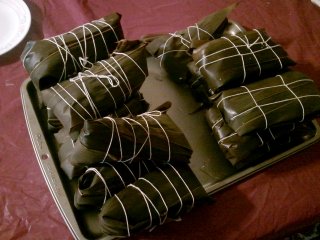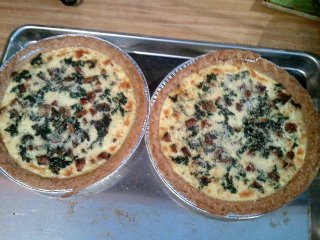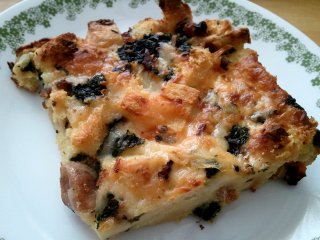Evermore Farm is out in Westminster, and their website starts out with the phrase “We’re so glad you found us.” I was glad to find them! They’re at the end of a very, very, very long driveway; after driving for quite some time, I was so convinced that I’d gotten lost that I called the number on the website. I got Ginger, who asked had I passed the first horse farm? Yes? Okay, then just keep going and I’d pass the second horse farm, and they’d be at the end of the lane.
Sure enough, I eventually passed Rockland Breeze Farm and pulled into the little lot at the end. When I got out of the car, I was greeted by the sound of bleating coming from the barn on the hill. It’s a gorgeous little spot, quiet with rolling terrain, and I’m sure the animals love it. Ginger let me pick whatever meat I wanted right from the freezers.
(Epilogue: K grilled the lamb for our Easter meal, using the flavor combinations from Alton Brown’s recipe. It was delicious — great flavors and very tender lamb. First time this year that he fired up the grill, too. I hope we have many good-weather days ahead; I love eating food fresh off the grill.)
As for the eggs: while clicking around for Easter inspiration, I ran across a link that suggested that you could use beets to dye eggs, and became obsessed with the idea. The most helpful link I found was this one off Serious Eats, How to Dye Easter Eggs Naturally. The writer used beets, turmeric, and red cabbage to create beautiful red, yellow, and blue eggs.
It was surprisingly easy. I peeled, diced, and boiled the beets (from week 1 of the CSA: still good!) in a quart of water with a tablespoon each of vinegar and salt. Not sure what the vinegar and salt were for; maybe they helped extract the color? Anyway, I then poured the water through a strainer, which removed the beet cubes, and let it cool. Did the same with some shredded red cabbage to produce a blue dye (the resulting liquid was dark purplish, but paper towels dipped inside came out indigo), and then simmered turmeric* in water (and vinegar and salt) until dissolved. Voila, three dyes.
I dyed both white and brown eggs. The dye was markedly more successful with the white eggs.
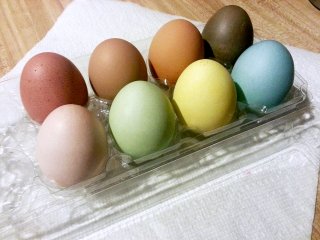
I made the green dye by mixing equal amounts of the blue and yellow dyes. The Serious Eats article is also correct in that you have to leave the eggs in the blue dye for a very long time for any color to set. To get that deep blue color in their pictures, they must have left it in for hours. Mine got maybe twenty or thirty minutes in the dye before I got impatient and yanked it out. I was very pleased with the resulting pastels. Looking forward to doing this with the kid next year, when he’s old enough to (hopefully) appreciate what’s going on.
I didn’t waste the beets and cabbage, either; since I only used less than half the red cabbage for the dye, I made the other half into sweet and sour German red cabbage, and mixed in the beets and cabbage from the dyes just before the simmering step. Turned out pretty well.
* The yellow dye recipe used an immense amount of turmeric — 6 tablespoons. I halved the amount and still used the better part of our spice jar. Also, not all the turmeric dissolved, despite my constant simmering and stirring. I think the author may have meant “teaspoons” instead of “tablespoons.”


